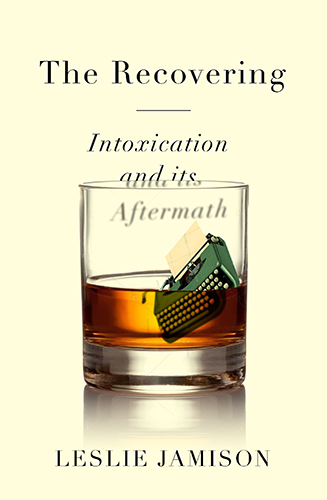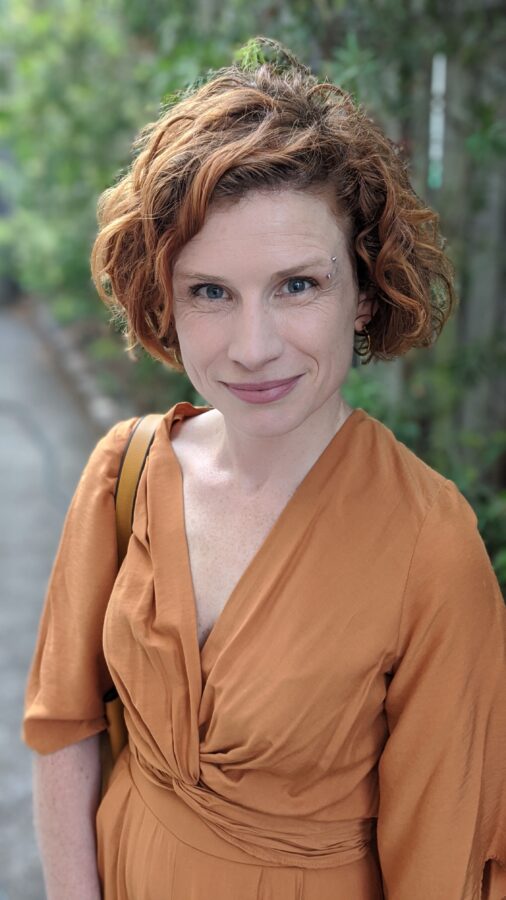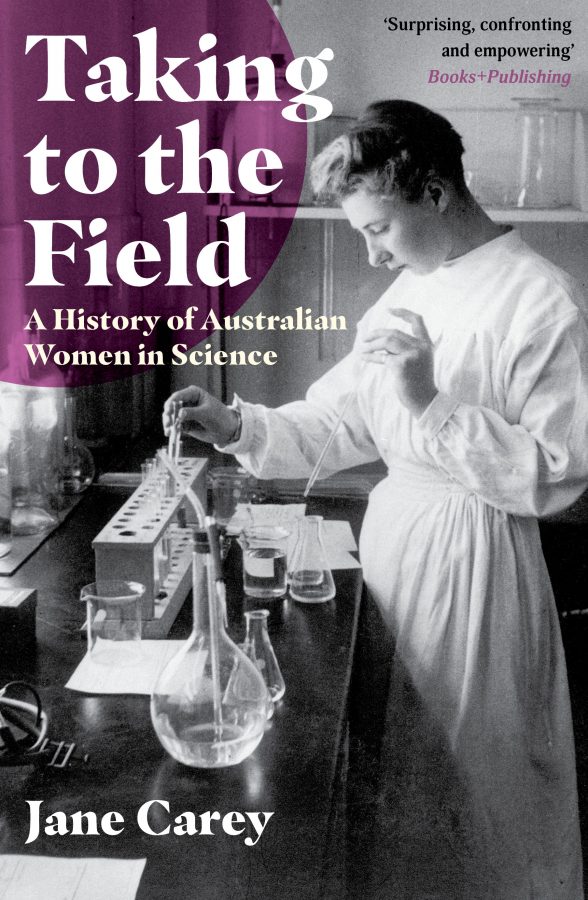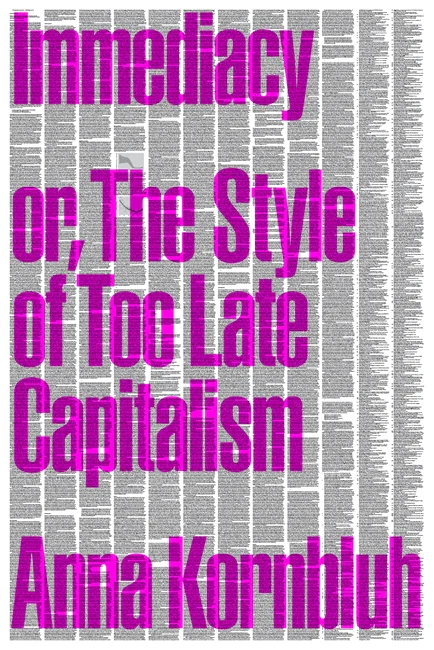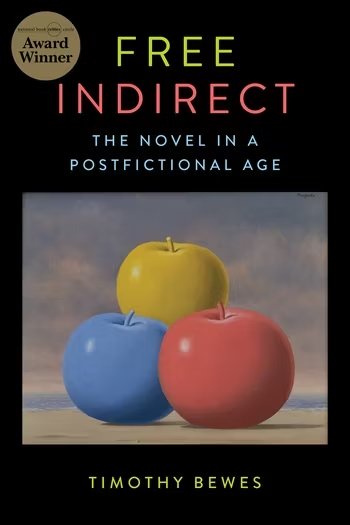About halfway through The Recovering, Leslie Jamison writes about a conversation she has with an ex-alcoholic: ‘I listened to his story as a writer – for its themes and climax – but I mainly heard it another way: as a woman who still wanted to drink more than she wanted to do anything else.’ And as I read this, my breath got caught in my chest: because this is how I couldn’t help but read this book, as a writer, yes, and as a woman still (still) in the grip of my compulsions, still trying to learn to live with them, or around them or beside them or whatever the position may turn out to be.
I’m not an alcoholic, although my relationship to alcohol, I know, is not uncomplicated. I love to drink, and I’m from a family who loves to drink, to celebrate events and milestones with the occasional bottle of French champagne, to open a bottle of something less fancy over a cheese plate on a Sunday afternoon. But my drinking is also often tangled with my not-eating: I know that in the early evening I often have a drink to stave off hunger, I know that much of my social life consists of meeting friends at bars rather than restaurants, because it’s still so incredibly hard for me to eat a meal that I haven’t cooked myself. I know I drink more when I’m anxious, and when I’m awkward and uncomfortable – in the same circumstances, that is, that I’m also likely to eat less.
I don’t think of anorexia as an addiction, not exactly – even though there is increasing evidence that the same neurochemical responses are implicated in both conditions, and even though I know that the sensations of acute hunger, the foggy calm that alternates with hyper-alertness, are definitely addictive – because there are so many other complicated fears and faults and mechanisms underpinning the disease. But even still, I couldn’t help but keep seeing myself in this book, couldn’t help ‘hearing myself spoken’, as Jamison puts it, and I think too that this is very much the point.
The Recovering is interested in resonance, or in what Jamison calls the ‘chorus’ – other voices, other narratives of both illness and recovery – and what they might offer to other people suffering or in pain. Resonance, she insists, isn’t ‘the same as conflation’ and doesn’t ‘mean pretending we’[ve] all lived the same thing.’ It’s not about ‘perfect correspondence’ but about ‘the possibility of company’, about fellowship, perhaps, or the realisation that our experiences are so often shared, that they aren’t ever unique, and that it’s precisely this commonality that makes them important. ‘Every addiction,’ she writes, ‘lives at the intersection between public and private experience.’ So too, perhaps, every illness, every bodily injury, everything that changes the way in which we are in the world.
In a way, then, this book is very much a continuation of the work of Jamison’s 2014 collection of essays The Empathy Exams, a book which was incredibly important to me while I was writing about my illness for the first time. The Empathy Exams is a collection about how we understand and relate to extremity and pain – our own, and other peoples’ – even and especially when their circumstances are not the same. It discusses injuries from Jamison’s own life – an abortion, heartbreak and heart surgery, a broken nose – but also the injuries and pain of others – men running a ridiculous endurance race, a community of people convinced they’re suffering from a syndrome that medicine doesn’t quite recognise. Jamison puts two kinds of experience, the self, the wider world, together in order that they resonate. They’re different, very much so, but together they might at least chime
Its final essay in particular, beautifully-bombastically titled ‘Grand Unified Theory of Female Pain’ discusses the trope of the wounded woman, in literature and art, and also in life. ‘We may have turned the wounded woman into a kind of goddess’, Jamison writes, ‘romanticised her illness and idealised her suffering, but that doesn’t mean she doesn’t happen.’ This essay I read, at the time, as a kind of call to arms: own your illness, it said to me, or maybe even simply, don’t be embarrassed by the fact that it hurts. This is a thing worth writing about, I heard, because it’s real, and it is not yours alone.
Part of the work of The Recovering is an attempt to understand pain that’s formless, or that feels, in Jamison’s words, ‘vague’ or ‘unjustified.’ It’s a pain that Jamison recognises as privileged, belonging to a ‘kind of nice, upper-middle class white girl’ not subject to the kinds of institutional or systemic injuries that affect others. But it’s also a pain, she claims, that ‘owes it existence’ to narratives about the wounded woman – that says she’s interesting and vulnerable and even beautiful; that she’s tortured, rather than just sad. Jamison is interested in the way that different bodies are allowed to tell different stories about their pain, and face different consequences as a result of it, and The Recovering wants to build a narrative that can both hold this truth and also honour the existence of all kinds of pain, regardless of their sources or expressions.
It’s not an easy path to walk though, and I know it often made me uncomfortable as I read, because I kept thinking of one of my psychiatrists, who once looked me square in the eye and said, there’s no hierarchy on suffering. My appointment with her came shortly after an intense three weeks that I had spent running writing workshops in dozen schools across Western Sydney, with other writers and performers from the area. All of the schools had Intensive English Centres that taught English to students who were refugees. We were writing stories with these students, and they spoke to me about their histories, about witnessing atrocities, about dangerous boat journeys, about death and war, and I didn’t know what to do with these stories, how to hold them, their urgency and awfulness and everything within them that I knew I couldn’t understand. In the weeks after, I kept thinking, I remember, what the hell is wrong with me that I can’t eat when these children have lived through cruelties that I can’t even imagine. I kept thinking, how can I be this stupid and selfish and wasteful, how can I even presume to be hurting, but what this psychiatrist was telling me is that validating one kind of pain – privileged, personal, white girl, first world, whatever you want to call it – doesn’t invalidate others; that the forces and structures and experiences underpinning pain don’t change the experience of it. Pain is pain, she was saying, and it’s real and it’s important, and it’s difficult, at times, to acknowledge this when so much else in the world is far more brutal and oppressive.
This kind of nebulous pain, though, Jamison eventually describes as ‘contoured by desire more than loss’; ‘wanting’, ‘need’ and ‘longing’, are the terms she alternately uses. (My psychiatrist was obsessed with longing, would quote Leonard Cohen’s Book of Longing at any opportunity, regardless of how often I rolled my eyes.) This wanting, she surmises, is a gaping need to be loved and seen and supported, but it’s also a longing for something transcendent, something more – that feeling of ‘electricity’ that Jamison associates with drinking. It has to do with upbringing, with social expectations, and with late capitalism (‘which sold me on the notion that I was insufficient so it could sell me on the notion that consumption was the answer to my insufficiency’). And it’s at the heart of both the drinking that is the focus of this book, and the anorexia that was always in the background of The Empathy Exams:
For a long time I’d thought of my drinking as the opposite of anorexia, as abandon rather than restriction. But I was beginning to see … that my relationship with drinking was a direct extension of those restrictive days. Starving myself meant resisting an endless longing, and drinking meant submitting to it … Drinking felt like the opposite of restriction. It was freedom. It was giving in to wanting, rather than refusing it.
For some reason, even though I’ve thought so often and for such a long time about my illness, this connection – starvation as resisting desire – had never before occurred to me, but reading it here made so much, such terrible, sense: because what is hunger if it isn’t a desire? And I can’t help but think: how many women have trouble understanding or accepting their desire, this thing that we’re supposed to be the object of, rather than possess, this thing that might make us ungrateful, unquiet, voracious? We’re not supposed to be voracious. We’re not supposed to have an appetite at all. How often does it turn poisonous within us?
I still don’t want to want. I still, so often, think of want as weakness. I wonder what it might mean to give in, rather than refuse.
Amongst the alcoholic writers that Jamison quotes is John Berryman, who wants ‘to be a tulip and desire no more/ but water, but light, but air.’ I see tulips outside every supermarket and florist that I pass.
Jamison draws on the stories of writers like Berryman in The Recovering in part because of this interest in resonance, and also in order to explore the cultural, and especially literary, myths we have about alcoholism, and whether there are, or even can be, corresponding narratives about what comes after. Jamison weaves into her own story those of other people she meets, in Alcoholics Anonymous, and in her research into rehabilitation centres, as well as those of other famously alcoholic writers – Berryman, Raymond Carver, Charles Jackson and David Foster Wallace. The famous women that are touchstones here are Jean Rhys and Billie Holiday, the latter not a writer, but important for the way in which her addiction was treated differently than that of her white and/or male counterparts (none of these other figures was ever handcuffed to a hospital bed.) This is a similar tactic to that used by Olivia Laing in her book about alcoholic writers, The Trip to Echo Spring – except that the proportioning is inverse in each book. Laing’s book is mostly biography, with her personal narrative occasionally woven in; whereas Jamison’s is predominantly personal, with these other stories the supporting material that broaden its scope and scale.
Jamison interrogates these other writers – their works, their lives – because the myth of the male genius, drinking both to fuel his visions and to help him endure them, is still one of the most persistent narratives of alcoholism that we have, and it’s one that’s irredeemably glamorous and seductive (‘I spent my days reading dead drunk poets,’ she writes, ‘and my nights trying to sleep with live ones’). But it’s a myth that doesn’t stack up – many of the writers Jamison examines were unable to work for long periods within their addictions – and it’s not a myth that is ever extended to women. Female drinking is not grandiose or romantic or fascinating; rather it is ‘a gratuitous affliction’, melodramatic, hysterical. It is reckless and shameful, and often described in terms of the families it injures or abandons.
Implicated in this questioning too is an examination of the common equation made between art and pain, of the ledgerbook thinking that would claim that suffering is redeemed by, or somehow made ‘worth it’ because of the work or wisdom that results. It’s as if creativity is a deal with the devil, but it’s an awful and a punitive connection to insist upon. Not only does it underpin and bolster that myth of the romantic alcoholic genius, but it also discounts the experiences of those millions of people who don’t ‘turn their pain into dream songs or best-selling novels’ or who ‘have nothing to show’ for their illnesses but wreckage. And it’s also, as Jamison points out, an impossible kind of equation. Discussing the life of Jean Rhys:
I’m not interested in the question of whether her work is “worth the price”, to us or anyone, because it was never our choice to make. Her life was. The work is. We can’t trade either back. There’s no objective metric for how much brilliance might be required to redeem a lifetime of damage – and no ratio that justifies the conversion. Whatever beauty comes from pain can’t usually be traded back for happiness.
I once had a psychiatrist tell me that I must be grateful for my illness because without it, I couldn’t have written a book about it, and I was too furious at this idea to even speak. It isn’t consolation, and it isn’t a fair trade, and it was never my choice to make. I know I would still have been writing, and whatever that work might have been will also never exist.
As well as these myths of alcoholism, Jamison is also interested in the clichés of recovering, because of the strange ways in which they operate in groups and meetings, and in the attempt to come to terms with what it means to (horrible cliché as this is) change one’s life. Clichés are everywhere in any kind of treatment, be they offered as kind platitudes of sympathy or as eager pieces of wisdom, and Jamison writes of cringing, in her early stages of recovery ‘at their singsong cadences’, of being disappointed when ‘other people abandoned narrative particularity in their stories – I accidentally crushed my daughter’s pet turtle after too much absinthe – for the bland pudding of abstraction – I was sick and tired of being sick and tired.’ It’s hard to be a writer and a patient simultaneously, to deal with the ‘conflicting imperatives’ each of these roles demand of narrative. ‘Meeting makers make it.’ Jamison chants, ‘It’s the first drink that gets you drunk. Take the cotton out of your ears and put it in your mouth.’
Bit by bit and bite by bite, I thought, and food is fuel and one meal at a time. It is what it is and how you feel is how you feel and always, always, it gets easier, although I’m not sure that is true. (I thought too of trying to write, recently, about the instant coffee that was provided to us in my last hospitalisation, how I wanted to write that the patients sucked it back like something, except that there was nothing that they sucked it back like except like anorexics with bitter-tasting but calorie-free hot drinks.)
The problem, Jamison acknowledges, is that writers are taught, always, to resist cliché, to write it new, to find uniqueness, the particular, telling detail. But even if you’re able to acknowledge the importance of resonance, the usefulness of stories that seem all the same and so might offer recognition, it’s difficult to turn off a writer’s critical, working brain. In Recovery, John Berryman wrote of being unable to stop himself from going ‘into double-consciousness’ when hearing the stories of others, or the injunctions of psychiatrists to ‘stay real’ or ‘be authentic’ at the same time as embracing ‘the Group mystique’. In The Recovering, Jamison writes about learning of a ‘Pattern Script’ that early proponents of AA were advised to use when telling their stories, outlining ‘what it was like (your drinking), what happened (why you stopped), what it’s like now (your sobriety)’ and feeling troubled by its ‘cookie-cutter conventions’ and ‘triptych structure’.
This dilemma is the reason why Jamison places such emphasis on the chorus of other voices that she brings into the book, because it is this, perhaps, that might redeem cliché – emphasising not what is original or new, but just what is ‘new for us’, for each person that thinks or feels in such a manner.
Closely linked to this is Jamison’s brief discussion of metaphor, and the ways in which it might offer more space than clichés can to acknowledge that recovering might look and mean differently for all of the different people who set out to do it. Jamison describes the French philosopher Catherine Malabou’s animal metaphors of recovery: the phoenix, reborn from its ashes essentially unchanged from how it was before; the spider, carrying a web of scars; and the salamander, which has grown a brand new limb. Each of these has made it in a different way, each of these has a different version of what it’s like now. But none of these I actually like. If I’m honest, I don’t even like the word ‘recover’ because its sense of finding again, or picking back up, what came before still jars with me and my experience. I’m not unchanged like a phoenix (although one of the women I met in my most recent hospitalisation has since had a phoenix, gloriously coloured, tattooed over the self-harm scars on her thigh) my wounds haven’t closed over into any kind of web, and I’ve no new limb to replace whatever it was that I lost.
It’s not uncommon for eating disorder patients to refer to people who’ve recovered as ‘unicorns’, because they’re legendary creatures that none of us have ever actually seen. One of the booklets given to parents and carers advises that they avoid acting like kangaroos – picking up the person they’re supporting and carrying them in their pouch – or rhinoceroses – steamrollering them into doing what they’re supposed to do – but to try, instead, to be a dolphin, swimming alongside and gentle nudging, every now and again. I spend days trying to think of an animal that might make a metaphor that I’m willing to lay claim to, researching the different ways that they react to injury or threat. And then as I’m walking my dog in Sydney Park one afternoon, the autumn light making the old brick pit towers glow orange-gold, a wiry little terrier runs up toward me with a lopsided, three-legged gait. Its owner tells me that the dog’s name is Stumpy, and I think yes, Stumpy, you’re it. Because there needs to be room in recovery for three-legged dogs, who can’t regrow a new limb, who carry their loss, but carry on, nonetheless. (I’ve more than once in my life been called a terrier, too, but that’s a different story.)
Because of these interests, in myth and metaphor and narrative, and also as a part of her own attempts at overcome her addiction, the main work of The Recovering is an endeavour to uncover what happened to its famous writers after they tried to stop drinking – to search for a narrative that might contain what happened to them when they tried to leave this mythology behind, to examine what they wrote out of the ordinariness of sobriety, rather than the ‘electricity’ (this is a word Jamison uses repeatedly) of addiction. At one point, Jamison refers to this interest as ‘speculative autobiography’, a way to ‘find a map for what my own sober creativity might look like.’ (I love this idea).
There is, of course, no great myth of recovery – it’s the part of our cultural narrative of illness or addiction that’s usually elided, falling as it does between the ‘hypnotic spiral’ of ‘ongoing, deepening crisis’ and the triumphant return to health, and riddled as it is with regressions and frustrations and repetitions, having to replicate the same, sane behaviour ‘Every. Fucking. Day.’ (as the members of Jamison’s AA Charter say). Recovery, Jamison argues, ‘is often seen as the narrative slack’ in any illness or addiction story. It doesn’t have adrenaline or alchemy or altered consciousness. It isn’t animated by yearning, ‘our most powerful narrative engine.’ Going off the rails is spectacular. Sticking to them and chugging along is anything but.
The problem of narrative, I know, was one that I struggled with before I first started writing about my illness, but it wasn’t because I was concerned about this slackness. It had more to do with messiness – with the fact that I couldn’t chart a clear beginning for my illness (nor can Jamison find one for her addiction: in the opening section of the book, she lists two full paragraphs of possibilities in response to the line ‘If I had to say where my drinking began…’) let alone an ending, and with the fact that I could never be sure, at any point across the process of getting better exactly what the facts were or exactly where I might be in or along the process of getting better. The problem of narrative was why I eventually came to write essays instead, because in essays, it seemed, the uncertainty was very much the point.
Jamison quotes a writer friend as saying that the problem with writing about the self is that it’s ‘like trying to make a bed while you’re still in it’; but I think when you are writing about a self that is recovering you also don’t know where the bed sheets are, or even if it is indeed a bed that you are lying in.
What startled me most, though, is that in the literature of recovery that Jamison is examining, what she finds most often is an interest in ordinariness, in anticlimax, in finding meaning in stability rather than flux and change. Charles Jackson, who, in the grips of his addiction had written The Lost Weekend (1944), a novel acclaimed at its time as a definitive portrayal of the alcoholism, years later describes his in-progress ‘sober novel’ to his editor by saying ‘the story happens, is happening – takes place, like daily living – on every page.’ Raymond Carver writes poems that ‘imagine desire in new terms’, in terms of landscape, respite, biscuits with jam. David Foster Wallace revels in the ‘unromantic, unhip and clichéd’ and the ways in which they might offer ‘the possibility of common ground.’
This startled me because the book that I am working on, that I’ve been working on for three years now, I most often describe as being about the idea of ordinariness, about habits and routines, about making a case for the everyday and quiet, rather than the extraordinary and dramatic. I say my other book was really about extremity, and that this is just its flipside; I say that what we consider ordinary is incredibly political because it’s also what we consider natural, because I still feel like I have to insist that these ideas are important, because I’m still afraid that they are boring.
Jackson’s second novel, Jamison writes, is boring. The two-part article that Life commissioned from him, outlining his addiction and then its redemption never ran, because the second part was boring. Another writer tells a friend that he fears that sobriety will leave him ‘lustreless’ at parties, full of ‘vegetable health’ instead of charisma: boring. Jamison finds herself ‘pushing yoghurt around, dry-eyed’, and bored. Perhaps this then is the challenge of any kind of recovery: how to make meaning, how to find beauty and brilliance, that electricity, out of an environment that’s no longer super-charged. How to desire nothing more extraordinary than water, light and air, and still entertain the possibility of tulips.
This is what ordinariness looks like for Jamison: rolling out and icing hundreds of sugar cookies in the back room of the small bakery in which she works, and finding both pleasure and calm in the task. Writing in diners, late at night, surrounded by ‘desolate strangers’ and feeling energised by these encounters. Attending meetings in church basements in the early morning. Carrying a can of Diet Cherry Coke in her handbag to drink at parties and ordering soda water at bars. Walking through a cemetery with a friend, and finding a shrine of quartz inside a concrete tree stump, something ‘out there, waiting’ that is ‘twinkling inside’, something neither boring nor electric but still meaningful, still poetic, and beautiful in its own way.
Works Cited:
John Berryman, Recovery/ Delusions, Dell, 1974.
Charles Jackson, The Lost Weekend, Farrar & Rinehart, 1944.
Leslie Jamison, The Empathy Exams, Graywolf, 2014.
Olivia Laing, The Trip to Echo Spring: Why Writers Drink, Canongate Books, 2013.
